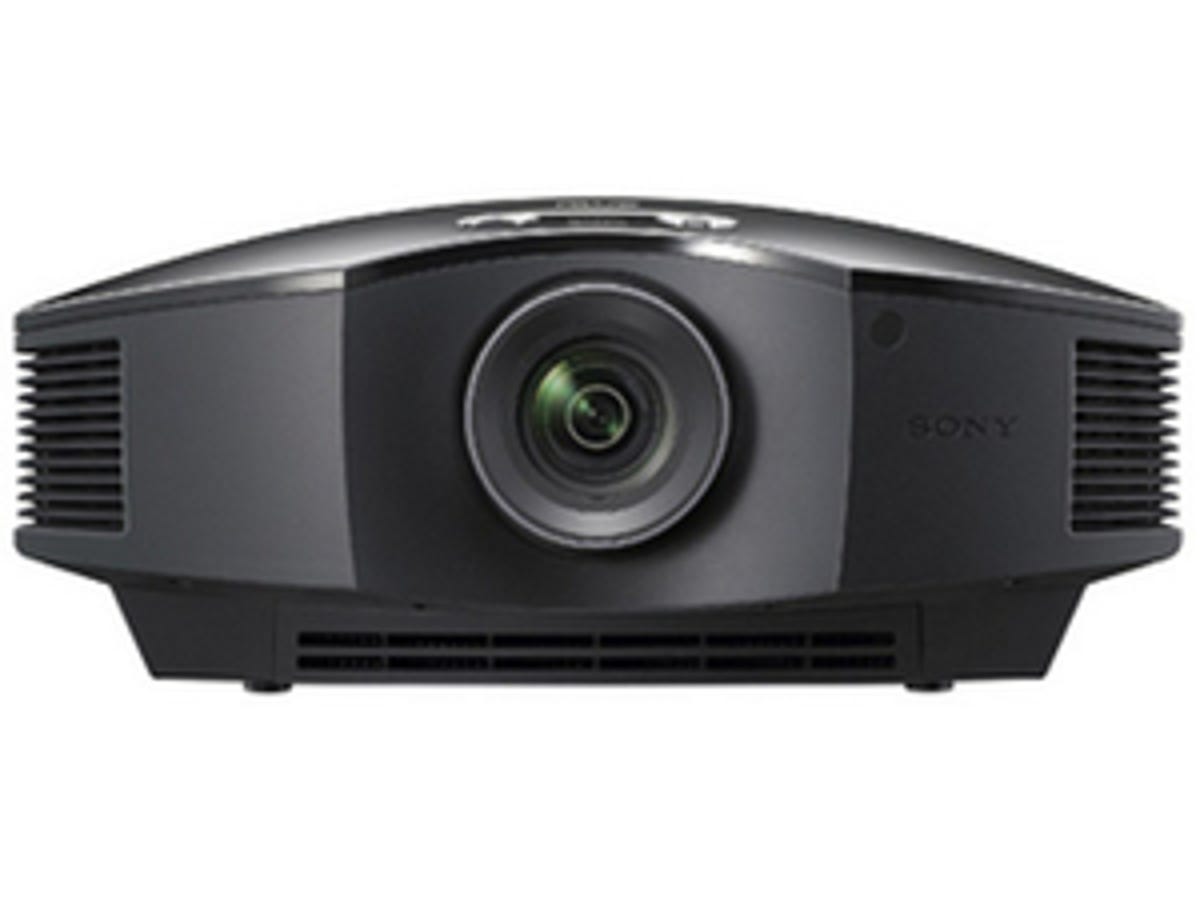 Why You Can Trust CNET
Why You Can Trust CNET Sony Bravia VPL-HW15 review: Sony Bravia VPL-HW15
The 1080p Bravia VPL-HW15 is an excellent -- and relatively affordable -- exponent of Sony's SXRD projection technology. It's an attractive machine, it offers a good range of connections and its picture quality is frequently stellar. It's the best projector we've seen under £3,000 so far
When Sony first launched its SXRD projection technology, we weren't sure consumers would be interested in another format muddying the already complicated projector waters. But, with the 1080p Bravia VPL-HW15, available for around £2,100, Sony has convinced us of the technology's worth.
The Good
The Bad
The Bottom Line
Pretty as pie
The VPL-HW15 makes a great first impression -- it's one of the prettiest projectors available. The centrally mounted lens gives it a pleasing sense of symmetry, and its high-gloss finish and elliptical profile are equally appealing.
It's quite a large, heavy unit. But, although this limits the number of coffee cups you can fit around it when on a table, it suggests the presence of some high-quality innards. What's more, the size seems to play a big part in keeping a lid on the VPL-HW15's running noise, making it one of the quietest 'serious' projectors around.
In terms of connections, the VPL-HW15 covers all the key bases, with two HDMI ports, a PC VGA socket, and an RS-232 connection. The only thing we missed was a 12V trigger jack, since this denies people with motorised screens a way of automatically firing them into action.
The set-up process is about as easy as it could be considering that the VPL-HW15 is really quite a sophisticated beast. We were especially happy to find both horizontal and vertical image-shift wheels, both of which allow you to move the image noticeably further than many rival systems.

The on-screen menus are straightforward and sensibly organised too, and contain a good number of picture tweaks. Among the adjustments are a 'cinema black pro' tool that lets you set how hard the projector's dynamic iris should work; high and low lamp-output modes; an unusually flexible MPEG noise-reduction circuit; gamma-level adjustment; and a black-level booster. We recommend you tinker with these to get the best picture. When you've finished, your calibration efforts can be stored in any of three memory slots.
You have to be quite careful with some of the settings listed above, though. For instance, the black-level booster can push out shadow detail if set too high, and the image can start to look noisy or unnatural if you're too aggressive with your gamma, sharpness and noise-reduction adjustments.
Slap my pictures up
Provided you apply sufficient effort to calibrating the VPL-HW15's pictures, it's capable of rewarding you with some pretty stellar picture quality.
We watched a couple of football matches on it, for instance, and it proved truly outstanding at handling fast motion. One of SXRD's biggest benefits is the ultra-fast response time of its chipsets, which helps football players appear with total clarity, even when they're running at full tilt.
There's only the slightest trace of judder, too. As a matter of fact, the amount of judder displayed actually seemed quite natural to us, rather than being distracting. The VPL-HW15 also manages to combine pure, crisp whites at one end of the spectrum with deep blacks at the other.
The best contrast results are attained using the projector's dynamic iris system. But it tends to work overly hard at times, causing obvious and distracting leaps in overall image brightness -- so much so that we generally preferred to leave the dynamic iris switched off, even though this slightly reduced the picture's overall punch.
But, even without the dynamic iris in play, the VPL-HW15's images look dynamic and bold, especially as they benefit from the most authentic colour palette yet seen on an affordable SXRD projector. The VPL-HW15's high-definition pictures also look terrifically crisp, and are packed with fine detail. Provided you're careful with the projector's sharpness setting, this crispness never tips over into gritty noise.
There are, however, a few limitations to the VPL-HW15's pictures that might tempt our well-heeled readers to step up to something more expensive, like Sony's own £4,500 Bravia VPL-VW85 or Epson's £4,000 EH-TW5500. These issues include marginally flat colours, a slight lack of post-calibration brightness, and an occasional faint green tinge to skin tones. With this in mind, Sony would have done well to include more colour-management features.
Conclusion
Having previously struggled to make its SXRD technology work successfully at the cheaper end of the market, Sony has finally found the magic formula with the Bravia VPL-HW15. In fact, thanks to the technology's fast response time and ability to deliver excellent fine detail, it's the finest projector we've seen under £3,000 so far.
Edited by Charles Kloet
